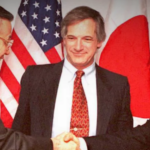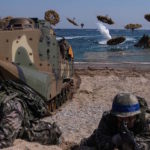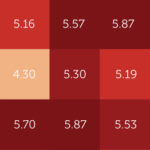May 27, 2016—
The 1994 Agreed Framework was the result of negotiations between the United States and the Democratic People’s Republic of Korea (DPRK) over the course of nearly two years. Signed on October 21, 1994, the goal of the agreement was to freeze North Korea’s suspected nuclear weapons program.
May 27, 2016—
To critically test this proposition, Beyond Parallel gathered data on the relationship between the United States-Republic of Korea (ROK) military exercises and North Korean provocations. The scope of our qualitative study was the past 12 years of annual U.S.-ROK spring military exercises (2005–2016).
April 8, 2016—
A survey study of 233 of the United States’ top Asia/Korea experts, government officials, scholars, and opinion leaders found that domestic stabilization, not nuclear weapons, ranks as the #1 issue for the U.S. with unification (i.e., highest composite score in the entire survey in terms of most acute lack of knowledge/most acute concern for U.S. interests). The top four blind spots for the U.S.: 1) domestic stabilization; 2) nuclear weapons; 3) economic development; 4) cost.



